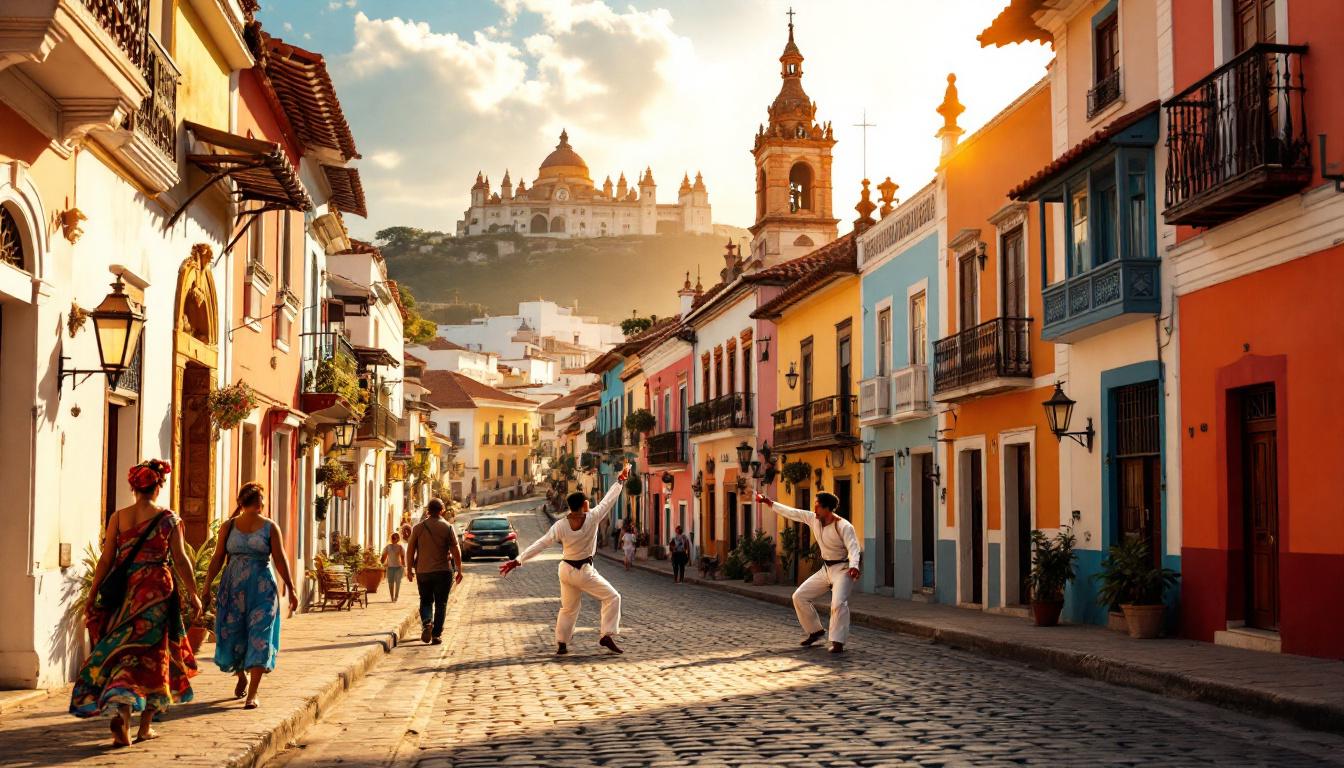Most travelers spend thousands chasing Rio’s crowded beaches and overpriced tourist traps, missing Brazil’s true cultural heart entirely. Salvador da Bahia delivers five times more authentic Afro-Brazilian experiences at 70% less cost, yet remains mysteriously overlooked by international visitors.
This northeastern capital of 2.9 million people preserves Brazil’s deepest cultural roots in ways Rio simply cannot match. While Rio’s Copacabana swarms with vendors and selfie sticks, Salvador’s Pelourinho district pulses with genuine capoeira circles, traditional Candomblé ceremonies, and family-run restaurants serving recipes passed down through generations.
The numbers tell an incredible story: average accommodations cost $44 per night compared to Rio’s $150, meals average $8 versus Rio’s $25, and you’ll experience authentic culture without fighting crowds of cruise ship passengers.
Why Rio disappoints compared to Salvador’s cultural depth
Commercialized carnival versus authentic street celebrations
Rio’s Carnival costs $300+ for distant stadium seats watching rehearsed performances. Salvador’s Carnival surrounds you with 2 million revelers in free street parties where locals welcome visitors to dance alongside traditional blocos. The trio elétricos create an inclusive celebration that Rio’s expensive, segregated events cannot replicate.
Tourist-focused samba versus living Afro-Brazilian traditions
Rio’s samba shows target tourists with diluted performances in air-conditioned theaters. Salvador’s streets echo with authentic samba-reggae rhythms, spontaneous capoeira demonstrations, and sacred Candomblé drumming that locals practice as spiritual expression, not entertainment. You witness living culture, not manufactured spectacle.
The authentic advantages that transform your Brazilian experience
UNESCO heritage without tourist masses
Salvador’s Pelourinho neighborhood contains Latin America’s largest collection of colonial architecture, yet receives one-tenth of Rio’s visitor numbers. You’ll photograph stunning baroque churches and pastel facades without waiting for crowds to clear, experiencing the intimacy that mass tourism destroys elsewhere.
Local food culture versus tourist restaurant chains
While Rio’s Ipanema overflows with international chains, Salvador’s markets bustle with moqueca prepared by Bahian grandmothers, fresh acarajé sold from traditional stands, and cachaca distilled by local families. Every meal connects you directly to centuries-old culinary traditions that remain unchanged by tourism pressure.
The dramatic cost savings that maximize your cultural immersion
Accommodation value that extends your journey
Boutique pousadas in Salvador’s historic center average $44 per night for colonial buildings with original tile work and ocean views. Rio’s equivalent accommodations cost $150+ and lack Salvador’s authentic architectural character. Your savings fund additional cultural experiences instead of inflated hotel bills.
Transportation efficiency versus Rio’s traffic chaos
Salvador’s compact historic core allows walking between major attractions, while affordable buses connect beaches and neighborhoods for under $1. Rio’s traffic jams waste hours and taxi rides cost 3x more. Salvador’s walkability keeps you immersed in street culture rather than stuck in expensive transportation.
The practical benefits that matter most for cultural travelers
Climate consistency versus Rio’s seasonal disappointments
Salvador maintains year-round temperatures between 75-85°F with ocean breezes, while Rio swelters in summer and cools uncomfortably in winter. You’ll enjoy consistent tropical weather perfect for exploring cobblestone streets and outdoor cultural events regardless of travel season.
Local connections versus tourist isolation
Salvador’s residents welcome cultural curiosity and share their traditions openly, especially in neighborhoods like Rio Vermelho where artists and musicians gather nightly. Rio’s tourist zones create barriers between visitors and authentic local life, limiting meaningful cultural exchange that defines transformative travel experiences.
Salvador proves that Brazil’s most profound cultural experiences happen far from Instagram-famous beaches and overpriced tourist districts. Your investment in authentic Afro-Brazilian heritage, colonial architecture, and living traditions delivers memories that manufactured tourist attractions never could.
Visit Salvador during the dry season from July through November for optimal weather and fewer crowds. Book accommodations in Pelourinho for walking access to cultural sites, and connect with local guides who share their city’s spiritual and artistic traditions respectfully.
Frequently asked questions about visiting Salvador
Is Salvador safe for international tourists?
Salvador’s tourist areas maintain good security, especially Pelourinho and Rio Vermelho neighborhoods. Use standard urban precautions and avoid displaying expensive items, particularly outside central districts.
Do I need Portuguese language skills to enjoy Salvador?
Basic Portuguese helps significantly since English isn’t widely spoken. Download translation apps and learn key phrases for ordering food and asking directions.
How do I respectfully experience Candomblé ceremonies?
Contact local cultural centers for public ceremonies welcoming visitors. Dress modestly, avoid photography without permission, and consider these sacred spiritual practices rather than tourist entertainment.
What’s the best way to reach Salvador from major international airports?
Fly into Salvador’s international airport (SSA) via connections through São Paulo or Miami. Most US and European carriers offer routes with one stop.
